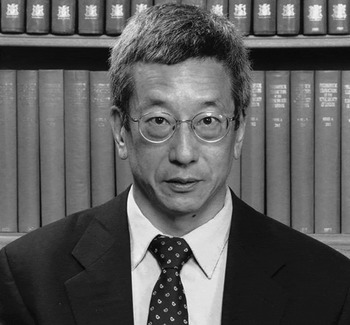
Roger Y. Tsien 1952–2016
The Editorial Board of QRB was greatly saddened to lose our inspirational colleague Roger Tsien in August 2016, passing away far too young. Over a number of years, he had attended the board meetings in La Jolla, and was always a source of imaginative ideas for new reviews, with an encyclopedic knowledge of large areas of biophysics. We shall miss him hugely.
Roger Yonchien Tsien (钱永健) was an American scientist of Chinese family origin, born in New York in 1952. He also had strong connections with Europe, having studied for his Ph.D. and gone on to postdoctoral work in Cambridge. He then returned to the USA, firstly on the faculty of UC Berkeley in the 1980s, and as a Professor and Howard Hughes investigator in UC San Diego thereafter.
Roger Tsien did more than anyone else in the application of fluorescent materials in biological sciences. He is undoubtedly best known for his development of the intrinsically fluorescent proteins and their many uses in cell biology and neurobiology. The original such protein is, of course, GFP, but Roger used genetic engineering methods to create a whole range of such proteins with different photophysical properties tuned to particular needs. In addition, he developed fluorescent probes such as Fura-2 that permitted calcium ions to be detected in cells, and this was extended to dyes that allowed the detection of other metal ions. Roger applied his science in medicine to great practical benefit, for example in the development of fluorescent peptides that would allow surgeons to visualize nerves thereby to avoid damaging them during surgery. His inventiveness extended to the commercial sector. Roger held many patents and was involved in setting up a number of companies.
Roger's scientific achievements were recognized by many awards. Of these the most prominent were the Wolf Prize in Medicine in 2004, and the Nobel Prize in Chemistry in 2008, shared with Osamu Shimomura and Martin Chalfie. He was elected a member of the US National Academy of Sciences, and a foreign member of the Royal Society.
Editorial Board meetings will not be the same without Roger's sage advice, deep knowledge and powerful intellect. He leaves a gap that is impossible to fill, and we are the sadder for it.
The QRB Editorial Board
La Jolla November 2016


